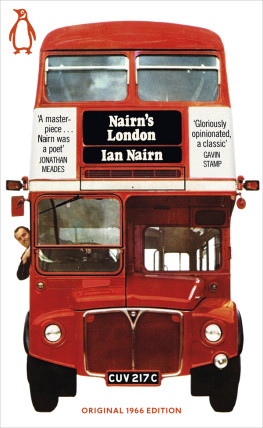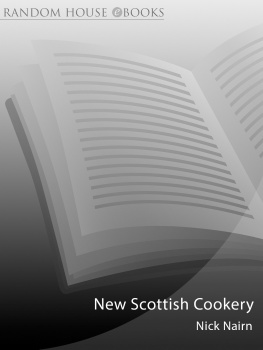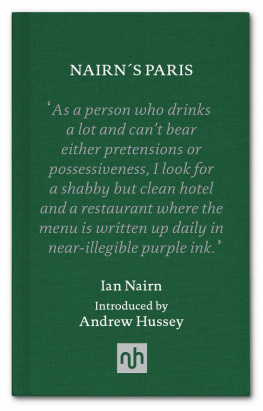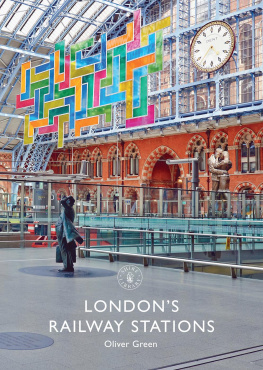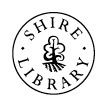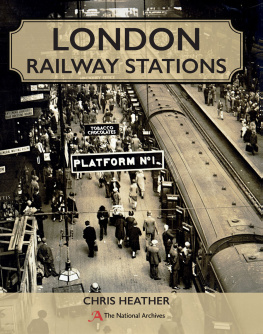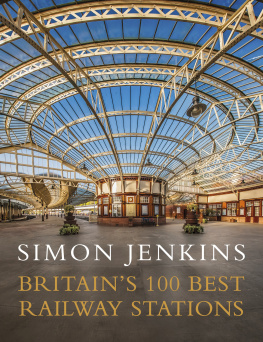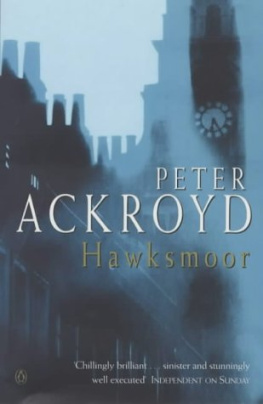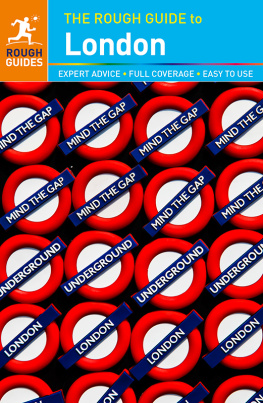Contents
Ian Nairn
NAIRNS LONDON
With 89 illustrations
Afterword by Gavin Stamp
PENGUIN CLASSICS
Published by the Penguin Group
Penguin Books Ltd, 80 Strand, London WC2R 0RL , England
Penguin Group (USA) Inc., 375 Hudson Street, New York, New York 10014, USA
Penguin Group (Canada), 90 Eglinton Avenue East, Suite 700, Toronto, Ontario, Canada M4P 2Y3 (a division of Pearson Penguin Canada Inc.)
Penguin Ireland, 25 St Stephens Green, Dublin 2, Ireland (a division of Penguin Books Ltd)
Penguin Group (Australia), 707 Collins Street, Melbourne, Victoria 3008, Australia (a division of Pearson Australia Group Pty Ltd)
Penguin Books India Pvt Ltd, 11 Community Centre, Panchsheel Park, New Delhi 110 017, India
Penguin Group (NZ), 67 Apollo Drive, Rosedale, Auckland 0632, New Zealand (a division of Pearson New Zealand Ltd)
Penguin Books (South Africa) (Pty) Ltd, Block D, Rosebank Office Park, 181 Jan Smuts Avenue, Parktown North, Gauteng 2193, South Africa
Penguin Books Ltd, Registered Offices: 80 Strand, London WC2R 0RL , England
www.penguin.com
First published by Penguin Books 1966
This edition published with a new Afterword 2014
Copyright The Estate of Ian Nairn, 2014
Afterword Gavin Stamp, 2014
The moral right of the author has been asserted
Original front cover design by Michael Norris
Cover photograph by Dennis Rolfe
All rights reserved
ISBN: 978-0-141-39616-3
PENGUIN MODERN CLASSICS
NAIRNS LONDON
IAN NAIRN was born in 1930 and died in 1983. He was first given the chance to write about architecture by the Architectural Review in 1954, after two false starts in mathematics and the RAF.
He became the architectural correspondent of the Observer in 1964 and after 1967 made many television films on towns and architecture for the BBC. By temperament, he wrote, he was much happier among architectural journalists than professional men, and listed flying and pubs the only kind of building he would have liked to design among his hobbies. He spent much of his time snuffling around for more material to fill Nairns Guides.
Ian Nairn was the author of Outrage, Your England Revisited, Modern Buildings in London, Britains Changing Towns, The American Landscape: A Critical View and Nairns Paris as well as the co-author of the Buildings of England volumes on Surrey and Sussex. He paid his wife, Judy Perry, the compliment of stating that she would certainly have been in Nairns London had she only been made of brick or stucco.
GAVIN STAMP was born eighteen years later than Ian Nairn and is an architectural historian and writer. Unlike Nairn, he prefers red wine to beer. His books include The Changing Metropolis, Telephone Boxes and The Memorial to the Missing of the Somme.
THE BEGINNING
Let the conversation begin...
Follow the Penguin Twitter.com@penguinukbooks
Keep up-to-date with all our stories YouTube.com/penguinbooks
Pin Penguin Books to your Pinterest
Like Penguin Books on Facebook.com/penguinbooks
Find out more about the author and
discover more stories like this at Penguin.co.uk
Nairns London belongs to no genre save its own, it is of a school of one. The masterwork There is barely a page which does not contain some startling turn of phrase Jonathan Meades
He taught us how to look Deyan Sudjic
Once you discover him, which in my case was through my dads copy of Nairns London, you want to read everything hes written He was a literary romantic, with a poetic sensibility Andrew M. Brown, Daily Telegraph
His attacks on the banality of Britains postwar buildings made Ian Nairn an inspiration for a generation of architectural critics Jonathan Glancey, Guardian
He could see beauty where others just saw dirt, chaos and decay. He delighted in the obscure it took me to wonderful buildings and unusual places I probably would not otherwise have discovered. Everything he wrote is worth rereading. During his short, furious, productive career, Ian Nairn had a more beneficial effect on the face of Britain than any other architectural writer of his time a great and hugely rewarding book Gavin Stamp
Ian Nairn taught me and a lot of us to look at the world David Thomson
Arguably the finest architectural writer of the twentieth century vivid, sensual descriptions of buildings, a way of writing about architecture that Id never imagined possible before his masterpiece a work of architectural criticism and architectural history of huge sophistication and erudition, a rum, bawdy and drunken dance up a back alley, a hymn to those rare moments where the individual and the collective meet Owen Hatherley
One of the best and oddest guidebooks to any city ever written Simon Bradley, Evening Standard
He had the gift of the potent image, making buildings and places animate or human anyone who cares even slightly about their surroundings should be intensely grateful His common themes are a passion for character, distinctiveness, contrast and surprise, for the unselfconscious and the visceral, and a matching loathing for the statistical, the phoney, the cold, the tepid, the routine, the indifferent and for what he called the prettification of places His approach was personal and visual, to capture emotional reactions in front of buildings, and record them with literate beauty Rowan Moore, Observer
To John Nash,
who provided so much of the material,
and to Tony Godwin,
who gave me the chance to write about it
List of Illustrations
Note on the Illustrations
The photographs for illustrations 1, 2, 3, 22, and 23 are by W. J. Toomey; those for illustrations 8 and 9 are by Eric de Mar and we thank the Gordon Fraser Gallery for permission to reproduce them; all other photographs are by the author.
Numbers in square brackets in the text refer to the illustrations.
Preface
This guide is simply my personal list of the best things in London. I have all the time tried to be rigorous not any old Wren church or view or pub, but the good ones and I have all the time tried to get behind conventional aesthetics to an internal reality of which beauty is only one facet. What I am after is character, or personality, or essence.
Whether this grandiose programme has achieved anything more than a collection of subjective maunderings, I am not sure. Too often words which seemed appropriate in the heat of the moment turn out to be trite clichs. Too often my perceptions have been blunted by the fact that I have lived in London for ten years, looking hard at buildings all the time. It is sometimes hard to recapture from the consciousness the first delight in a building which you may have seen a hundred times. There are bound to be too many superlatives, and too many of the same superlatives: I can only plead with the reader to regard this as an anthology and treat each embarrassing rapture as complete in itself.
The guide goes up to the edge of the built-up area a little further all round than the Greater London Council and contains about four hundred and fifty entries. This is an astonishing number. In spite of everything, London contains many more and more varied masterpieces than Rome or Paris, just as the National Gallery can produce more and more varied excitements than the Louvre or the Vatican galleries. Nothing will ever quite fit to the accepted waves of Continental influence; and the true Londoner will never quite fit in any pattern at all, even an English one.

